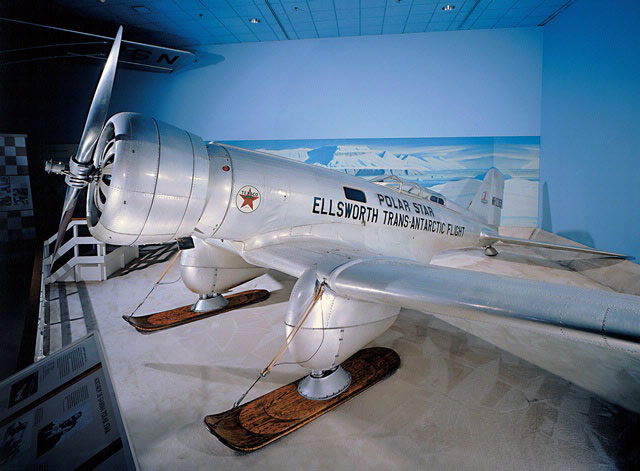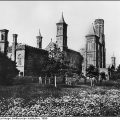Today in Smithsonian History: April 5, 1984

Northrop 2B Gamma Polar Star On November 23, 1935, explorer Lincoln Ellsworth, with pilot Herbert Hollick-Kenyon, took off in the Polar Star from Dundee Island in the Weddell Sea and headed across Antarctica to Little America. Fuel exhaustion forced them to land 40 kilometers (25 miles) short of their goal on December 5, and they walked for six days to reach their destination. They settled in the camp abandoned by Richard E. Byrd several years earlier. The British Research Society ship Discovery II sighted them on January 15, 1936, near the Bay of Whales. Hollick-Kenyon later returned to recover the Polar Star. The dent in the fuselage behind the engine was caused by a hard landing on the polar ice. The total distance flown by the Polar Star before its forced landing was about 3,862 kilometers (2,400 miles). (Photo by Eric Long)
April 5, 1984 The “Golden Age of Flight” exhibition gallery opens at the National Air and Space Museum. This gallery is a major exhibition devoted to aviation from 1919 to 1939.

Hughes H-1
The Hughes H-1 racer, designed by Howard Hughes and Richard Palmer and built by Glenn Odekirk, was developed to be the fastest landplane in the world. On September 13, 1935, Hughes achieved this design goal by flying the H-1 to a new world speed record of 567 kilometers (352 miles) per hour at Santa Ana, California.
Hughes broke the transcontinental U.S. speed record in the H-l on January 19, 1937, flying from Los Angeles to Newark, New Jersey, in 7 hours, 28 minutes, and 25 seconds. His average speed for the 4,000-kilometer (2,490-mile) flight was 535 kilometers (332 miles) per hour.
Also known as the Hughes 1B, the H-1 was designed with two sets of wings: a short set with a span of 7.6 meters (25 feet) for speed record flight, and a long set with a span of 9.2 meters (31 feet, 9 inches) for transcontinental flight. The aircraft as it is exhibited here is equipped with the long set. (Photo by Eric Long)

Wittman Chief Oshkosh/Buster
The aircraft that enjoyed what was perhaps the longest and most successful career in air racing history was Steve Wittman’s Chief Oshkosh, known in the post-World War II era as Buster. From 1931 until its retirement in 1954, this midget racer set records and took numerous trophies in class races and free-for-alls.
Although Wittman was plagued with several problems in this, his first homebuilt racer, he placed high each year in major races in Los Angeles, Cleveland, Miami, and Chicago. In 1937 Chief Oshkosh set a new world’s speed record for its class over a 100-kilometer (60-mile) course at Detroit with a speed of 383 kilometers (238 miles) per hour. (Photo by Eric Long)
Posted: 5 April 2019
- Categories:






